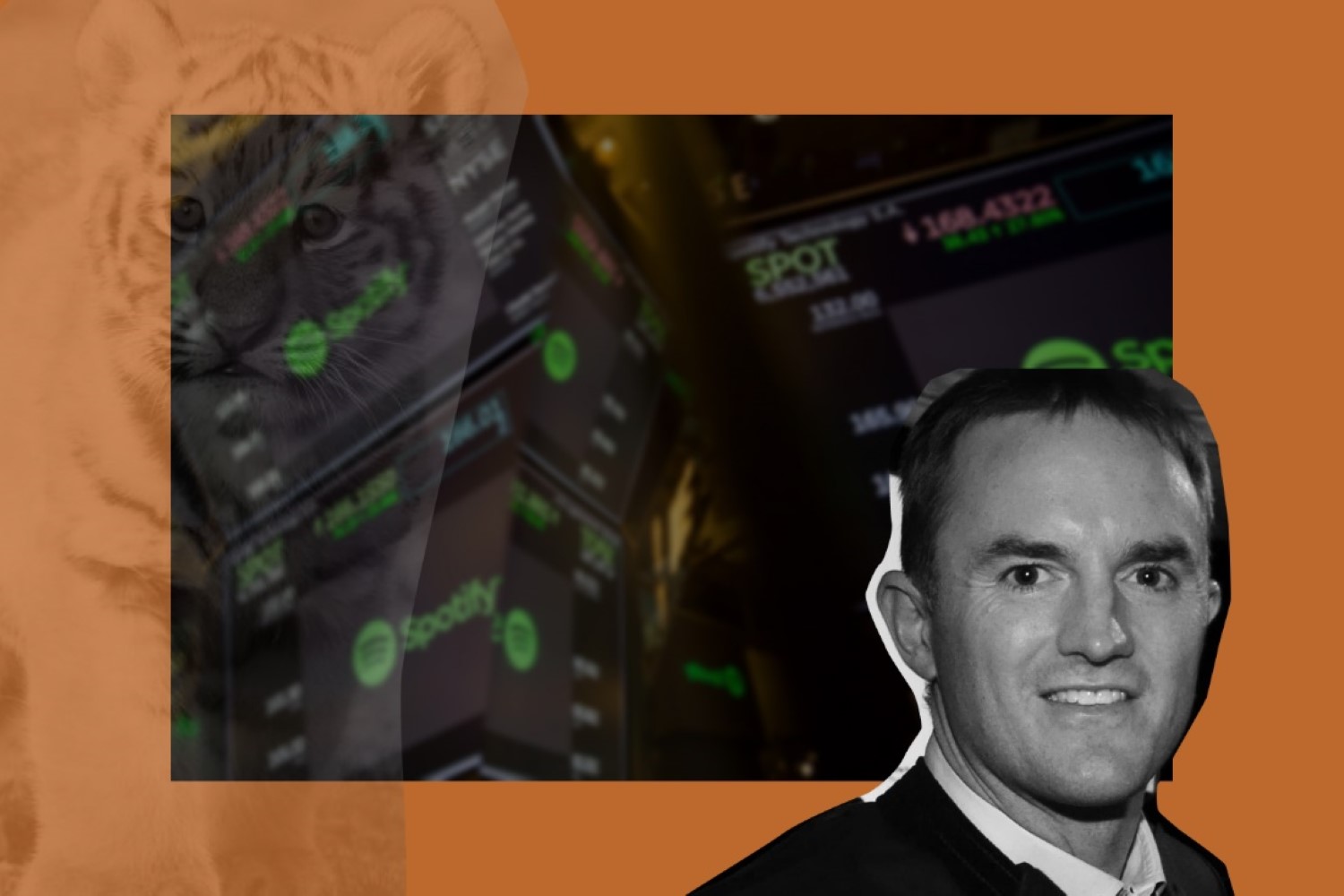How This Tiger Cub is Turning “the Sail” of Old-Fashioned VC Culture
It’s been more than 20 years since hedge fund legend Julian Robertson decided to give Chase Coleman a chance to operate his own hedge fund. However, nobody is safe from suspicion. At the time, people were doubting if this young manager could make it.
The presence seems to kick out these misgivings when Coleman, 47, was one of the biggest winners of the tech bull market: his flagship fund delivered compound annual returns of 21% over 20 years.
It’s never easy to manage a big pool of capital, and there are many untold stories about this low-profile “tiger cub” that make people curious about the way that he and his team in Tiger Global is changing Silicon Valley. This article will give you a breakdown of his journey from a shy analyst to a “tiger” eating all the VCs’ norms.
Introverted Analyst to Snap in an Amazing Profits for Years
One of the fascinating things about Coleman is that he’s a true American blue blood. Chase Coleman unquestionably belongs to America’s elite. This figure was born into riches and is a direct descendant of Peter Stuyvesant, who served as New York’s director-general while it was a Dutch colony. On Long Island’s North Shore, Coleman befriended Spencer Robertson, the son of Tiger’s renowned manager Jullian Robertson.
Coleman joined Pater Robertson’s company in 1997 after completing his lacrosse career at Williams College, where he served as team captain. The Economics and Spanish graduate made an impression during the following four years, and Coleman maintained Robertson’s personal funds for a year after Tiger Management closed.
When it’s the time to move on, Robertson provided the funding to young Coleman to set up his own flagship. Coleman started Tiger Tech with $25 million under management. He was just 25 years old at the time.
This 25-year-old analyst seemed shy and insecure. “He didn’t look you in the eye,” recalls an investor who says he had to wonder. Was Coleman really gifted, or was Robertson’s support just because of the special relationship?
Whatever early misgivings that investors may have had about Coleman, over the following two decades, he put up double-digit gains annually and got well pronounced as a genius.
By the end of 2021, Tiger Global, which runs as a hedge fund, a long-only fund, and multiple venture capital funds, was one of the largest companies of its sort in the world.
In a highly crowded and competitive worldwide industry, it was one of the most successful players by practically any criteria. Coleman was the youngest hedge fund manager to ever make the list at the age of 45 at the time. His net worth would soon hit an estimated $10 billion.

Although Coleman did not quite match Julian Robertson’s legendary strategy, he built an organization much larger than his mentor’s flagship Tiger Management — and made a lot more money.
Both gurus have demonstrated the ability to provide enormous returns, which has caused an exponential increase in the amount of investment capital. In Robertson’s case, he could not maintain his profits, but did become a heavy voice by mentoring so many young hedges fund founders and managers. And in Chase Coleman case, he learns from his “teacher” Robertson to embrace the internet that led to his success for years.
Chase Coleman to Embrace and Aid the Revolution of Technology
In fact, Tiger Global served as both an extension and a repudiation of Robertson’s approach. The new vehicle harkened back to Tiger as a long-short hedge fund, focused on fundamentals. Coleman, though, favored tech stocks in contrast to his mentor, who had infamously rejected them. The fund’s primary objective was to make investments in the developing industry.
From the beginning, Chase Coleman saw himself as the descendant of Robertson’s methodology by adopting much of these investment philosophy, and sundry other “Julianisms” in his strategy.
This basically means to buy the best companies… levered to the most important secular growth patterns” and “short the worst,” according to Institutional Investor. During the turmoil, the fund got off to “a sizzling start” by shorting losers and building up a string of smart long bets.
Just like his mentor, Julian Robertson, Coleman is prone to make big bets on companies he likes. And he certainly doesn’t mind going short when he sees an underperforming sector or company, a trait that helped him recover after 2009.
Building a massive flagship is the thing that billionaires have to do, but to disrupt and change the long history old fashioned method in the industry will bring their position to the next level. Chase Coleman has been doing that to set his firm apart from others’.
Years to Rock the VCs’ World with a Balls to the Walls Approach
Insiders in Silicon Valley frequently criticize Tiger Global for investing in tech start-ups at a scale and rate that damaged the sector. One of its investors described the firm’s strategy as “balls to the walls.” In recent years, Tiger Global appeared to be taking control of the VC industry more and more.
In 2021, it supported a dizzying 335 deals, more than one investment per business day. According to venture-market data company CB Insights, Tiger Global “won the title as 2021’s top investor,” which means that Tiger Global made the most investments that year.
Tiger Global had created a symbiotic relationship between its hedge-fund holdings and its venture-capital investments. As a venture capital firm, it made investments in startup businesses that were on the verge of going public, typically in the software, consumer apps, or internet space.
Tiger’s aggressive management style contributed to higher total valuations for these businesses, accelerating the growth of the so-called unicorns, or privately held start-ups with a value of over $1 billion.
Based in New York City, Tiger Global was never part of the Silicon Valley culture of trying to seek out visionary founders and holding the hands of entrepreneurs. It distinguished itself by participating in subsequent fundraising rounds and entering data into its models, presumably bringing a more Wall Street-oriented approach to venture investing than a Sand Hill Road-oriented one.
Nevertheless, that is not the only thing that Chase Coleman’s firm has done to change the way the venture capital world performs. Tiger Global’s methodology is something that fundamentally changes the way that venture capital is raised and breaks those unspoken rules in the industry.
How This Tiger Cub’s Empire is Disrupting the Silicon Valley
One of those unwritten “rules” Tiger Global broke was allowing separate Tiger Global venture-capital funds to invest in the same company. Because the newer funds can end up making the older funds look better by simply purchasing a portion of the companies in the earlier funds’ portfolio, this approach was frequently outlawed in the VC world in the past.
And it is just the first step. There are many rules in the game that’s no longer suitable, especially when the pandemic hit, those VCs had to look back into their methodology to keep up with the crisis. But with Tiger Global, they have been changing the VCs’ world in bold yet critical ways.

The first is the acceleration of dealmaking. Before the covid-19 pandemic, negotiations happened mostly in person, restricting the amount of encounters. But when the crisis hit, e-meetings on Zoom and other video-conferencing platforms tend to take only a few clicks, allowing both founders and investors to talk to many more potential partners.
“Things have never moved faster” is a typical mantra these days in Silicon Valley, a place famed for its slowness. The main justification is to keep up with Tiger Global and other New Yorkers like Coatue Management and Insight Partners.
Second, Tiger Global has made an effort to evaluate businesses in a more organized manner. Although the business never applies for board positions because it sees it as a waste of time, it has a lot of knowledge about its investments because of the expanding pool of ever-better indicators available for assessing the performance of companies.
In order to locate promising targets, it has also developed its own early-warning network. A similar company in another region might be worth investing in if a new internet service succeeds there, for instance.
Many VC firms could learn a thing or two from this approach. Another seasoned venture capitalist sighs, “We are a group of terrible investors. More than fifty percent of us never even return capital. This recognition is music to the ears of their put-upon limited partners.
The final effect of Tiger Global might be the most significant. It illustrates a change in the relative strength of investors and entrepreneurs. Investors have traditionally held the advantage. Startup founders’ pilgrimage to Sand Hill Road, seeking not just money but valuable advice that the best VCs would provide.
Chase Coleman, together with his team has been battling here and there to get to the present position. From aiding the trend of the internet to disrupt the old-fashioned method of the VCs in Silicon Valey, Tiger Global’s impacts on the industry is not just a phrase for marketing. Let’s look at their performance to see where they are on the road.
Where is Tiger Global now Over 20 Years of Battling?
While 2021 has been tough for Chase Coleman’s Tiger Global Management, by some metrics, it was the top hedge fund of 2020.
The company returned $10.4 billion to investors in 2020, the most among the 20 top-performing hedge funds tracked by fund-of-funds company LCH Investments, riding a 48% return from its flagship fund.
For those who’ve invested with or followed Coleman in the two decades since he started Tiger Global, they’ve probably gotten used to such impressive performance by now. According to LCH, the “Tiger cub,” has generated returns of $26.5 billion after fees since the fund’s launch in 2001, with compounded annual returns above 20%.
The blowout success in 2020 corresponded with the start of the firm’s 20th year, creating it a suitable time for the Tiger Global brass to reflect on their two-decade run.
Although experiencing an enormous growth, Tiger Global also met some downturns points during the architecting process.
In 2008, with a pessimistic perspective of banks and other cyclical industries, this capital wandered too far off of our target areas, keeping them from owning the best Internet businesses during the 2009 market recovery.
In 2016, Tiger Global’s exposure levels were excessively high relative to the expected returns of our underlying portfolio, requiring them to play defense rather than attack during a steep market sell off.
Moreover, selling valuable assets too soon is one of the mistakes that the firm has encountered. There is an even longer list of businesses they have sold too early – Facebook, Peloton, LinkedIn, Amazon, and Netflix to mention a few – only to turn around and repurchase a fraction of the shares we previously owned for far more capital.
Chase Coleman has been embracing the tech sector since day one, and he still keep that mission in mind for all of his movements with Tiger Global. In 2022, this man continues to set his eye on this sector which aligns his success since the inception.
Enter 2023, Chase Coleman seems to be more observant. In January 2023, His Tiger Global is not one of the most active capitals in the investing game since it only invested in one startup, according to CrunchBase.
Chase Coleman Continues to Bet on Software and Big Tech Stocks
Chase Coleman’s Tiger Global Management kept expanding its stakes in software and Big Tech throughout the third quarter after a rough start to the year 2022, according to regulatory filings.
Coleman’s tech-centric fund struggled amid the sector’s dramatic declines in 2022. The fund was down 50% overall, according to a source who told CNBC’s David Faber earlier this year, following a 14% loss in only May.

However, the fund has not altered its long-term plan. As of September 30, 2022, according to a securities filing, Tiger still had $1.5 billion invested in JD.com and $1.4 billion in Microsoft. Its investment in ServiceNow increased to over $600 million.
The fund also notably increased its holdings in Alphabet, DataDog, Workday, and Li Auto during the third quarter.
AppLovin, Hubspot, Pagaya Technologies, and Taiwan Semiconductor were among Tiger’s biggest acquisitions during the quarter. The fund also increased its holdings by more than 50% in the Chinese staffing provider Kanzuhn Ltd. According to a CNBC calculation, Tiger owns equity stakes worth close to $11 billion.
Tech stocks struggled again during the third quarter of 2022, with the iShares U.S. Technology ETF falling 8.2%. However, the precise date that Tiger made the additional purchases is unknown. The fund’s long equity position is disclosed in the securities filing, but no information regarding the timing of the trades or potential hedge positions is provided.
Tiger reduced his shares in Crowdstrike and Nu Holdings by a big amount. During the quarter, Tiger made major departures from ProCore Technologies, XPeng, Monday.com, and 1Life Healthcare.
Bottom Lines
Over the years, Chase Colemen has been keeping his profile low and rarely shares publicly about his life or his flagship. However, looking at the performance of his venture capital, we can see that he is in a victory lap. He is the descendant of Julian Robertson’s strategy, but not too skeptical of changing and adopting new trends in the world that is always moving forward.
After 20 years of rocking the stage of the Silicon Valley, as for Coleman, will he continue to hold his gains or will he slip away? This is the question that only “Mr. Future” can reveal.









